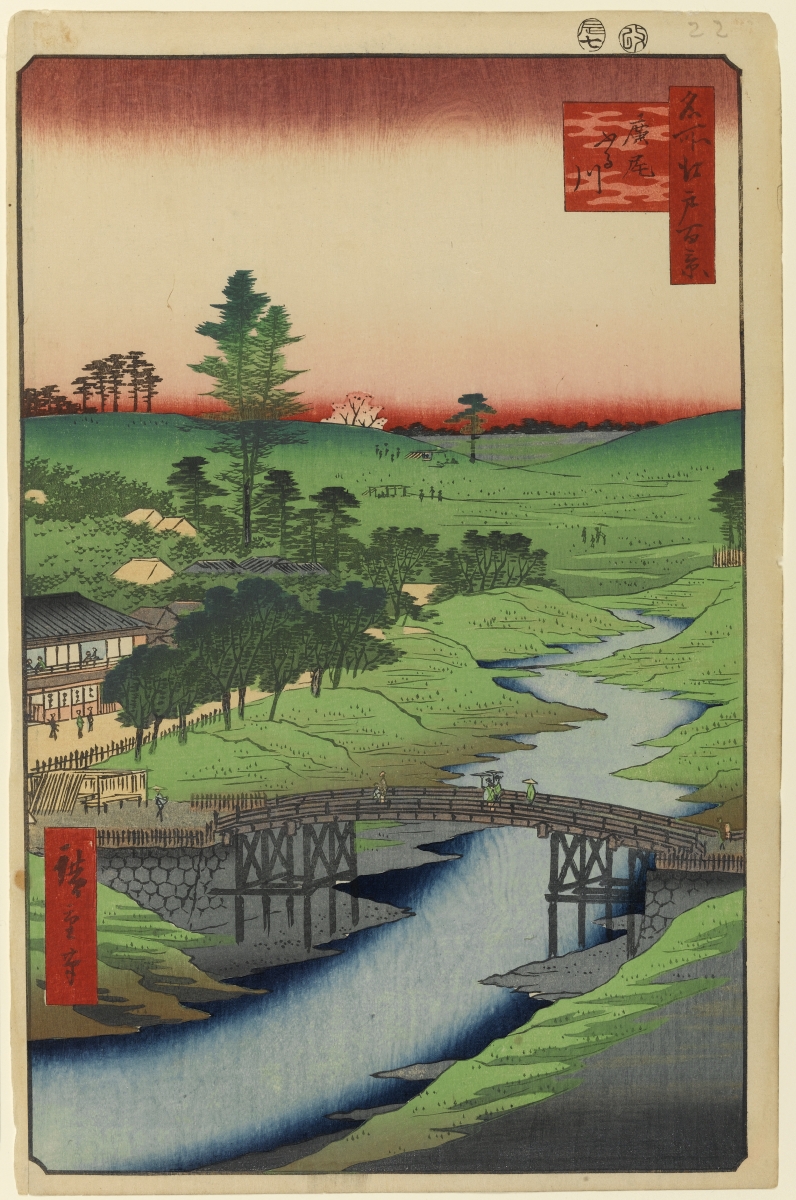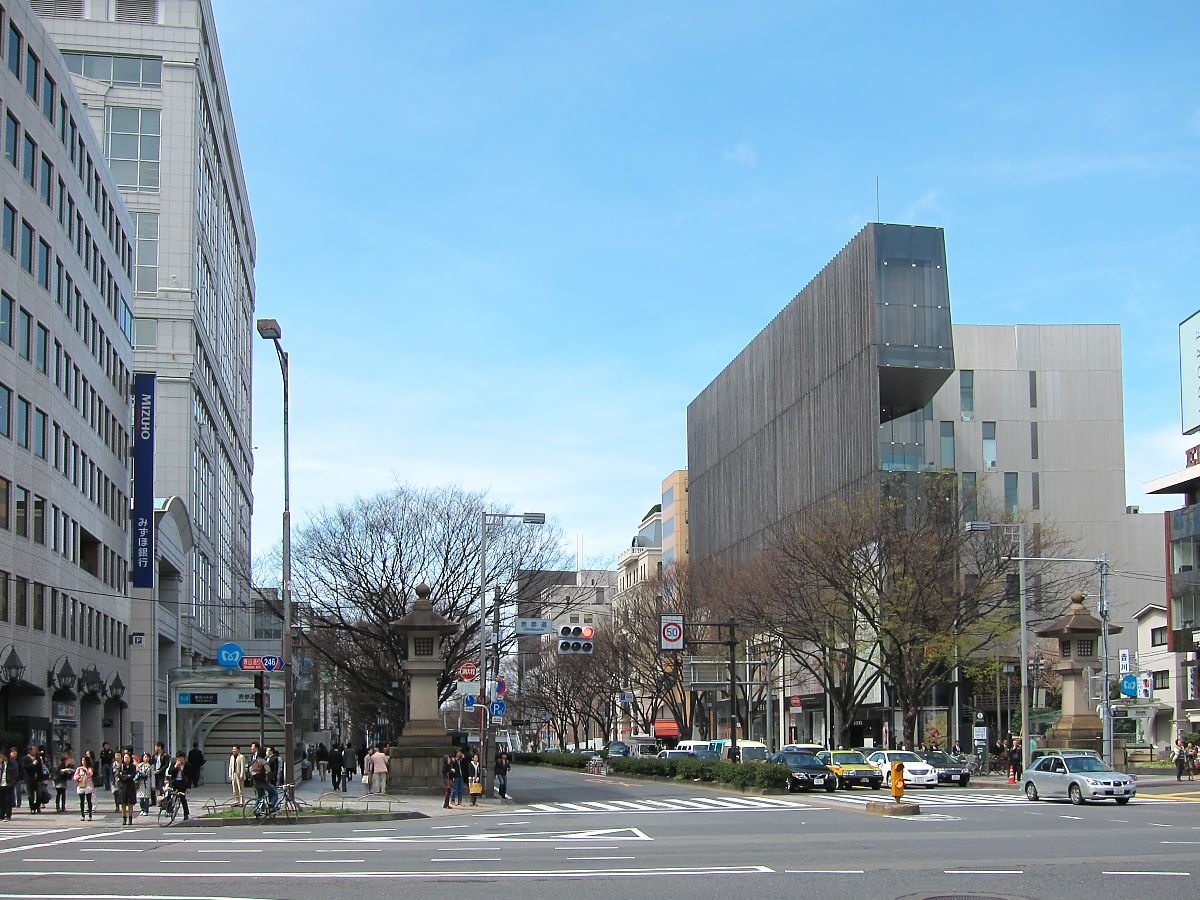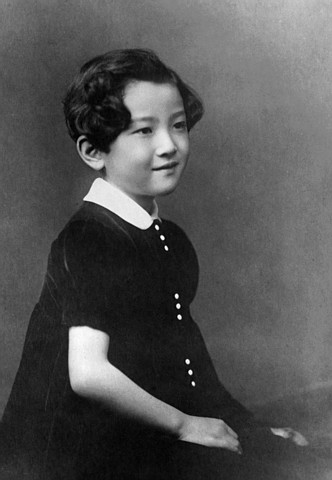|
Hiroo, Shibuya
is a district of Shibuya, Tokyo, Japan. Abutting Ebisu, Minami-Azabu, Nishi-Azabu and Minami-Aoyama, Hiroo is an upmarket residential and shopping neighborhood in central Tokyo. As of October, 2020, the population of this district is 15,263. The postal code for Hiroo is 150-0012. According to the Ministry of Land, Infrastructure and Transport, as of 2020, the residential land prices on Hiroo 2-chōme and 3-chōme are as high as ¥1,350,000/m2 and ¥1,260,000/m2, respectively. Located on Minami-Azabu, the Hiroo Station of Tokyo Metro Hibiya Line is the nearest subway station to Hiroo. Geography Hiroo is located in the southeast area of the district of Shibuya, Tokyo, Japan. The boundaries of Hiroo are Nishi-Azabu, Minato and Minami- Aoyama, Minato to the north and follows the Shibuya River along the south. Minami-Azabu, Minato is located to the east and Higashi, Shibuya is located to the west. Education Tertiary education There are two universities in Hiroo. The Univers ... [...More Info...] [...Related Items...] OR: [Wikipedia] [Google] [Baidu] |
Special Wards Of Tokyo
are a special form of municipalities in Japan under the 1947 Local Autonomy Law. They are city-level wards: primary subdivisions of a prefecture with municipal autonomy largely comparable to other forms of municipalities. Although the autonomy law today allows for special wards to be established in other prefectures, to date, they only exist in the Tokyo Metropolis which consists of 23 special wards and 39 other, ordinary municipalities (cities, towns, and villages). The occupy the land that was Tokyo City in its 1936 borders before it was abolished under the Tōjō Cabinet in 1943 to become directly ruled by the prefectural government, then renamed to "Metropolitan". During the Occupation of Japan, municipal autonomy was restored to former Tokyo City by the establishment of special wards, each with directly elected mayor and assembly, as in any other city, town or village in Tokyo and the rest of the country. Minority, mostly leftist calls for a were not answered. The qu ... [...More Info...] [...Related Items...] OR: [Wikipedia] [Google] [Baidu] |
Aoyama, Minato, Tokyo
is one of the wealthiest neighborhoods of Tokyo, located in the northwest portion of Minato Ward. The area is well known for its international fashion houses, cafes and restaurants. or "North Aoyama" refers to the area on the north side of Aoyama-dori (Aoyama Street) between the Akasaka Palace and Aoyama Gakuin University, while or "South Aoyama" refers to the area to the south of Aoyama-dori and extends to the northern edge of Roppongi, Azabu and Hiroo. During the Edo period, Aoyama was home to various temples, shrines, and samurai residences. The name Aoyama is derived from a samurai named Aoyama Tadanari who served the Tokugawa Shogunate and held his mansion in the area. Today, along with Shibuya and Harajuku, it is one of the most popular entertainment and shopping areas "Omotesandō", for young people in Tokyo. It is well known for its fashion houses, restaurants, and shopping. Chichibunomiya Rugby Stadium is in the North part of Aoyama. Places in Aoyama * Aoyama ... [...More Info...] [...Related Items...] OR: [Wikipedia] [Google] [Baidu] |
Chome
The Japanese addressing system is used to identify a specific location in Japan. When written in Japanese characters, addresses start with the largest geographical entity and proceed to the most specific one. When written in Latin characters, addresses follow the convention used by most Western addresses and start with the smallest geographic entity (typically a house number) and proceed to the largest. The Japanese system is complex and idiosyncratic, the product of the natural growth of urban areas, as opposed to the systems used in cities that are laid out as grids and divided into quadrants or districts. Address parts Japanese addresses begin with the largest division of the country, the prefecture. Most of these are called ''ken'' (県), but there are also three other special prefecture designations: ''to'' (都) for Tokyo, ''dō'' (道) for ''Hokkaidō'' and ''fu'' (府) for the two urban prefectures of Osaka and Kyoto. Following the prefecture is the municipality. For ... [...More Info...] [...Related Items...] OR: [Wikipedia] [Google] [Baidu] |
Hiroo Junior High School Tokyo
{{disambiguation, geo ...
Hiroo may refer to: * Hiroo (given name), a masculine Japanese given name * Hiroo, Shibuya, Tokyo, a neighborhood in the Shibuya district of Tokyo * Hiroo Station, a subway station in Tokyo. * Hiroo, Hokkaidō, a town in the Tokachi subprefecture of Hokkaidō * Hiroo District, Hokkaidō, a district in Tokachi Subprefecture of Hokkaidō * Mount Hiroo, a mountain in the Hidaka Mountains of Hokkaidō See also * Hiro (other) Hiro may refer to: Arts and entertainment * ''Hiro'' (film), a Canadian short film * Hiro (TV channel), an Italian channel * "Hiro's Song", by Ben Folds * " Yuko and Hiro", a Blur song * "Letter from Hiro", a song by The Vapors, off New Clear Day ... [...More Info...] [...Related Items...] OR: [Wikipedia] [Google] [Baidu] |
Japanese Red Cross
The is the Japanese affiliate of the International Red Cross. The Imperial Family of Japan traditionally has supported the society, with the Empress as Honorary President and other imperial family members as vice presidents. Its headquarters is located in Tokyo and local chapters are set up in all 47 prefectures. 9,610,000 individual and 120,000 corporate members belong to the society, which operates 92 Red Cross hospitals and 79 blood centers all over the country. The Japanese Red Cross Society conducts relief activities when major disasters take place. Large earthquakes which frequently occur in Japan (such as the 1923 Great Kantō earthquake, the 1995 Great Hanshin earthquake and the 2011 Tōhoku earthquake and tsunami) are an area of work for the society. History Count Sano Tsunetami founded the , a relief organization for the injured of the Satsuma Rebellion of 1877; a modified version of the Japanese flag was used by the organization until 1887. Its name was changed ... [...More Info...] [...Related Items...] OR: [Wikipedia] [Google] [Baidu] |
Empress Michiko
is a member of the Imperial House of Japan who served as the Empress of Japan, Empress consort of Japan as the wife of Akihito, the 125th Emperor of Japan reigning from 7 January 1989 to 30 April 2019. Michiko married Crown Prince Akihito and became the Crown Princess of Japan in 1959. She was the first commoner to marry into the Japanese Imperial Family. She has three children with her husband. Her elder son, Naruhito, is the current emperor to the Chrysanthemum Throne. As crown princess and later as empress consort, she has become the most visible and widely travelled imperial consort in Japanese history. Upon Emperor Akihito's 2019 Japanese imperial transition, abdication, Michiko received the new title of , or Empress Emerita. Early life and education Michiko Shōda was born on 20 October 1934 at the University of Tokyo Hospital in Bunkyō, Tokyo, the second of four children born to Hidesaburō Shōda (:ja:正田英三郎, 正田英三郎 ''Shōda Hidesaburō''; 1903– ... [...More Info...] [...Related Items...] OR: [Wikipedia] [Google] [Baidu] |
Japanese Empresses
The Empress of Japan is the title given to the wife of the Emperor of Japan or a female ruler in her own right. In Japanese, the empress consort is called . The current empress consort is Empress Masako, who ascended the throne with her husband on 1 May 2019. Much like their male counterparts, female rulers who ascend the throne by their birthright are referred to as 天皇 (''tennō''), but can also be referred to as 女性天皇 (''josei tennō'') or 女帝 (''jotei''). ''josei tennō'' refers only to an empress regnant of Japan, and ''jotei'' refers to an empress regnant of any countries. Empresses regnant There were eight female imperial reigns (six female emperors including two who reigned twice) in Japan's early history between 593 and 770, and two more in the early modern period (Edo period). Although there were eight reigning empresses, with only one exception their successors were selected from amongst the males of the paternal Imperial bloodline. After many centuries, ... [...More Info...] [...Related Items...] OR: [Wikipedia] [Google] [Baidu] |
Sadako Ogata
, was a Japanese academic, diplomat, author, administrator, and professor emerita at the Roman Catholic Sophia University. She was widely known as the head of the office of the United Nations High Commissioner for Refugees (UNHCR) from 1991 to 2000, as well as in her capacities as Chair of the UNICEF Executive Board from 1978 to 1979 and as President of the Japan International Cooperation Agency (JICA) from 2003 to 2012. She also served as Advisor of the Executive Committee of the Japan Model United Nations (JMUN). Early and academic life She was born on 16 September 1927 to a career diplomat father Toyoichi Nakamura (who became in 1943 the Japanese ambassador to Finland) and her original name was Sadako Nakamura. Her mother was a daughter of Foreign Minister Kenkichi Yoshizawa and granddaughter of Prime Minister Inukai Tsuyoshi, who was assassinated when she was four years old, due to his opposition to Japanese militarism, whose assassination marked the end of civilian control ... [...More Info...] [...Related Items...] OR: [Wikipedia] [Google] [Baidu] |
United Nations High Commissioner For Refugees
The United Nations High Commissioner for Refugees (UNHCR) is a United Nations agency mandated to aid and protect refugees, forcibly displaced communities, and stateless people, and to assist in their voluntary repatriation, local integration or resettlement to a third country. It is headquartered in Geneva, Switzerland, with over 17,300 staff working in 135 countries. Background UNHCR was created in 1950 to address the refugee crisis that resulted from World War II. The 1951 Refugee Convention established the scope and legal framework of the agency's work, which initially focused on Europeans uprooted by the war. Beginning in the late 1950s, displacement caused by other conflicts, from the Hungarian Uprising to the decolonization of Africa and Asia, broadened the scope of UNHCR's operations. Commensurate with the 1967 Protocol to the Refugee Convention, which expanded the geographic and temporal scope of refugee assistance, UNHCR operated across the world, with the bu ... [...More Info...] [...Related Items...] OR: [Wikipedia] [Google] [Baidu] |
University Of The Sacred Heart (Japan)
The is a Japanese private women's university located in Hiroo, Shibuya, Tokyo. It was established in 1916 as a special school (''senmon gakkō'') by the Society of the Sacred Heart. It became a university in 1948 and is one of the oldest women's universities in Japan. Departments The University has one faculty of Liberal Arts, with the following departments: *Department of English Language and Literature *Department of Japanese Language and Literature *Department of History and Social Sciences *Department of Philosophy *Department of Education It also has a graduate school of arts offering master's degrees and doctorates in these subjects. Affiliated schools *Sacred Heart School in Tokyo *International School of the Sacred Heart Notable alumnae * Eriko Yamatani, politician * Makiko Fujino, politician * Empress Michiko * Sadako Ogata, scholar, former United Nations High Commissioner for Refugees * Mariko Ōhara, author * Ayako Sono, author * Ikumi Yoshimatsu, Miss Internatio ... [...More Info...] [...Related Items...] OR: [Wikipedia] [Google] [Baidu] |






